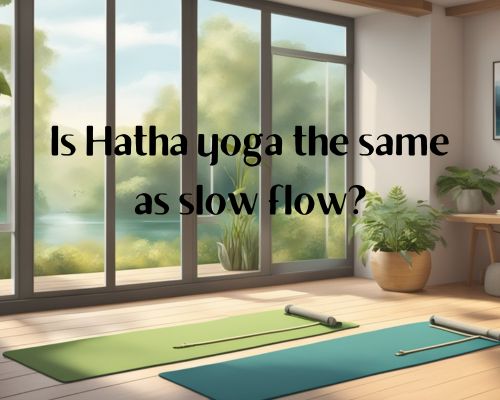Yoga enthusiasts often seek practices that align with their physical and mental goals. This leads to questions about the differences between various styles. A common query is whether Hatha yoga and slow flow yoga are the same.

Both practices aim to harmonise the mind and body, yet they cater to different experiences and needs. Slow flow yoga integrates elements of both Hatha and Vinyasa, creating a unique blend that emphasises steady transitions and mindful breath work. This approach can be particularly appealing for those seeking a more reflective, meditative practice, see https://bikramyogamornington.com.au/.
Understanding these distinctions can be crucial for practitioners to select a style that best suits their personal preferences and wellness objectives. In exploring the nuances between Hatha and slow flow, one can appreciate the flexibility and variety that yoga offers.
Understanding Hatha Yoga
Hatha Yoga is a foundational practice within the yoga tradition. It offers a pathway to balance the mind and body through physical poses, breathing, and meditation. It has a rich historical background and is renowned for its holistic benefits.
Historical Context
Originating in India, Hatha Yoga is deeply rooted in ancient traditions. Its earliest references are found in texts like the “Hatha Yoga Pradipika” and “Gheranda Samhita”. These scriptures date back several centuries and laid the groundwork for modern yoga practices. Hatha Yoga evolved to include a wide array of philosophies and forms, adapting over time to fit different cultures and needs. Its teachings were transmitted orally through generations, which helped in preserving its essence and spiritual depth. As it spread globally, practitioners began adapting the practice to focus more on physical postures.
Key Principles and Techniques
Hatha Yoga focuses on aligning the body and calming the mind through asana (poses), pranayama (breath control), and meditation. Asanas incorporate both static and dynamic postures to build strength, flexibility, and endurance. Pranayama involves various breathing techniques like Anulom Vilom (alternate nostril breathing) and Kapalabhati (skull shining breath) to enhance focus and energy. Meditation is integral, promoting mindfulness and self-awareness. These components support a balanced practice aimed at purifying the body, stabilising energy, and preparing the mind for deeper spiritual development.
Physical and Mental Benefits
Hatha Yoga offers numerous benefits for both body and mind. Physically, it enhances flexibility, muscle tone, and joint health. Regular practice can also improve circulation and digestive function. Mentally, Hatha Yoga reduces stress and anxiety through its emphasis on mindful breathing and meditative focus. It encourages mental clarity and emotional stability, nurturing a profound sense of inner peace. These benefits contribute to an overall well-being, making Hatha Yoga a versatile and effective practice for people of all ages and fitness levels.
Exploring Slow Flow Yoga
Slow flow yoga offers a gentle yet effective approach, blending breath and movement to enhance mindfulness and physical alignment. This practice provides a unique harmony beneficial for people at different levels of experience.
Defining Slow Flow
Slow flow yoga is a style characterised by its meditative pace, encouraging practitioners to hold poses longer. This approach allows individuals to focus on alignment and the connection between breath and movement. Unlike faster-paced styles like vinyasa, slow flow emphasises a deliberate and thoughtful transition between poses, promoting a calming environment that nurtures the mind and body. The slower pace allows for increased awareness of muscle engagement and a deeper connection to the breath, supporting balance and mental clarity.
Contrasting Practices
In the broader spectrum of yoga, slow flow stands out for its mindful tempo compared to more vigorous styles such as power yoga or vinyasa. While both vinyasa and slow flow link breath to movement, slow flow intentionally slows the transitions, creating a gentler, more introspective practice. This makes it accessible for beginners and individuals seeking a milder approach. Conversely, faster styles cater to those who enjoy dynamic sequences that build heat and demand stamina. Slow flow often incorporates modifications and props, appealing to a wider audience and accommodating various flexibility and strength levels. This versatility helps cultivate a personal practice tailored to each practitioner’s needs, see https://bikramyogamornington.com.au/.
Choosing the Right Practice
Selecting the appropriate yoga practice depends on personal preferences and goals.
For those seeking mindfulness and stress relief, slow flow yoga provides an ideal setting. It suits individuals looking for a practice that combines movement with meditation. It also suits those recovering from injuries or wanting to practise at a more contemplative pace.
Beginners may find slow flow’s inclusive nature and supportive transitions beneficial for learning postures and breathwork without feeling overwhelmed.
In contrast, individuals aiming to enhance cardiovascular fitness or build strength might explore more intensive styles.
Understanding these differences helps practitioners make informed decisions on incorporating yoga into their wellness routines.
